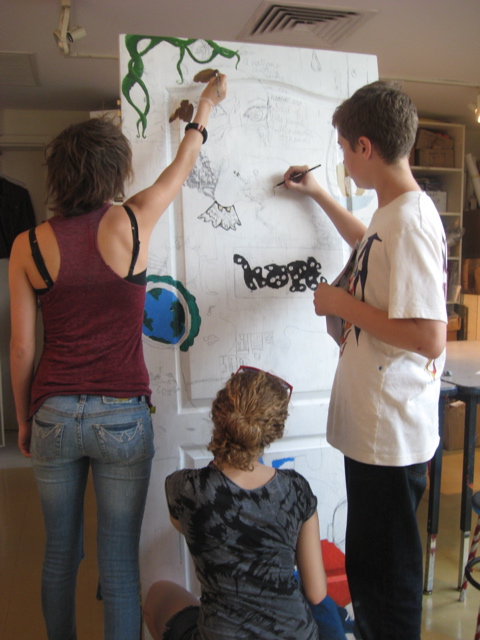Getting Out the Vote in Middle School
Civic Engagement and the Student
Dear Families,
Whether through class discussions and projects, current events presentations, or registering voters on Sixth Avenue, the current election has provided an authentic opportunity for middle school students to consider what it means to be informed and active citizens. Last week in Middle School meeting, the class reps read a series of quotes without attribution to Senators McCain and Obama and asked their classmates if they could determine which quote was spoken by which candidate. It was not quite as easy as students thought and through this experience we affirmed the need for citizens to research the issues and to be thoughtful and critical thinkers. This activity served as a kick-off to our Mock Election project. In order to participate, students were required to register in advance of the election day and were informed that they would need to give up some time during recess and lunch on voting day if they wanted to vote. Students were also given a chance to review the ballot so that they could consider thoughtfully the set of issues questions on which they would be asked to vote.
There was a strong turn out of eighth graders who voted early on Tuesday because they would be at Minimester on Wednesday. The polls opened for fifth through eighth graders on Wednesday and while students had to wait in line to vote electronically in the computer lab, the polling place was well monitored by the class reps. Students were able to vote for President and Vice President and Representatives. They were also asked to consider a number of critical domestic and foreign policy issues, a slate of issues specifically relevant to young people, and a number of issues relevant to life in the Middle School. The results of our election will provide opportunities for additional discussion and inquiry as the real election approaches; the results of the questions specific to LREI will provide important information for the class reps and their on-going work.
As John Dewey observed in Democracy and Education (1916) “A democracy is more than a form of government; it is primarily a mode of associated living, of conjoint communicated experience.” That shared sense of experience was clearly evident in the conversations and palpable excitement that surrounded our mock election. Moving beyond their relevance to this particular experience, Dewey’s words have profound implications for how schools conceive of the educational process itself. Schools that consciously organize themselves around this foundational idea are, through their very structure, educating students for active participation in a democratic society. We’ve worked hard to structure LREI in this kind of way and as Dewey observed elsewhere in Democracy and Education, “In static societies, societies which make the maintenance of established custom their measure of value, this conception applies in the main. But not in progressive communities. They endeavor to shape the experiences of the young so that instead of reproducing current habits, better habits shall be formed, and thus the future adult society be an improvement on their own.”
With that in mind, I encourage you to consider our students’ take on some of the issues that are at the center of the upcoming election (click here for a summary of our mock election results). They present a unique look into what is on their minds. I hope that their responses will inform the on-going dialog taking place at home about these important issues. Regardless of the outcome, on Wednesday, November 5th, we will run an extended morning homeroom so that students can share and discuss their responses to the election. We will also meet as a whole community at our regular Middle School meeting that afternoon.








